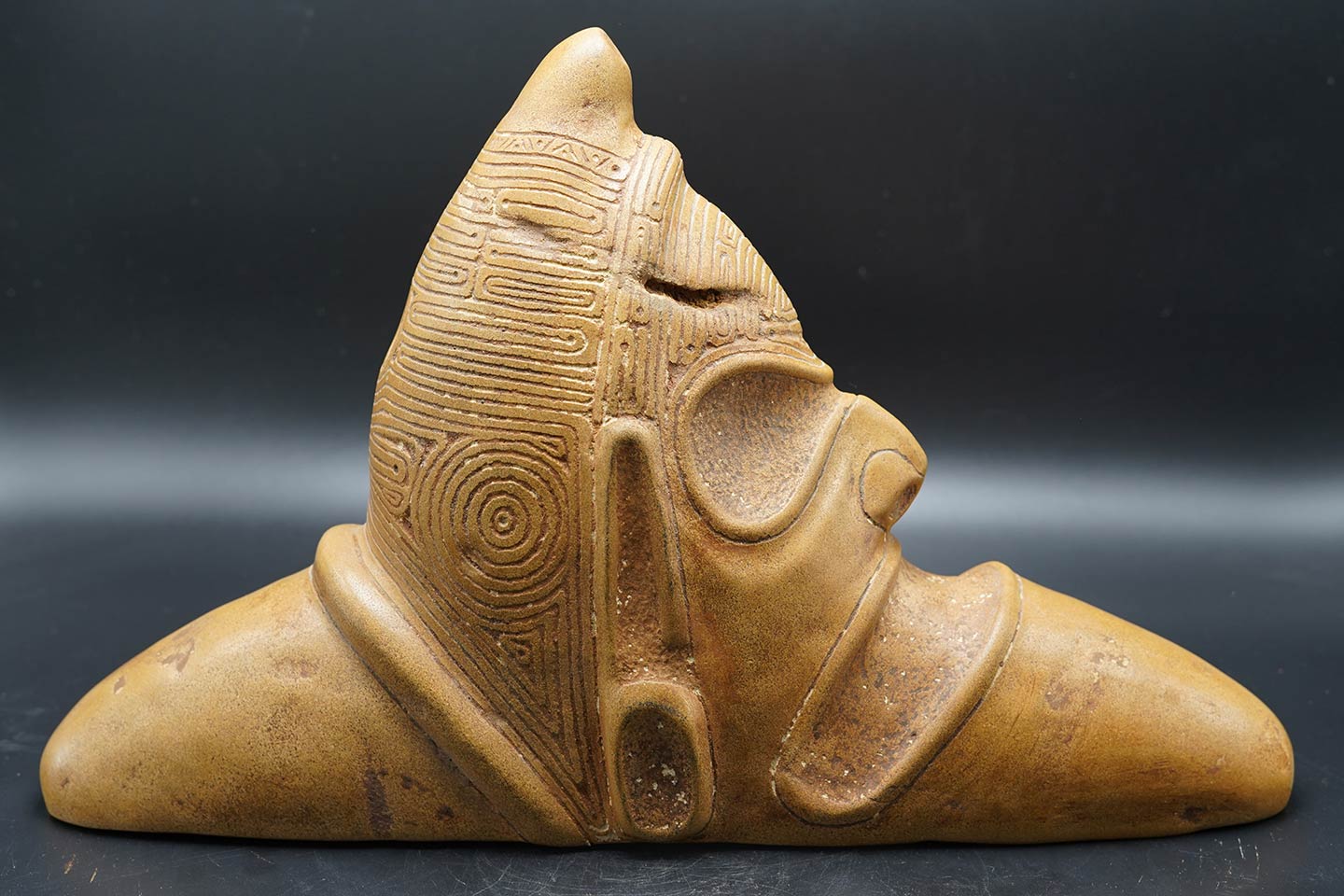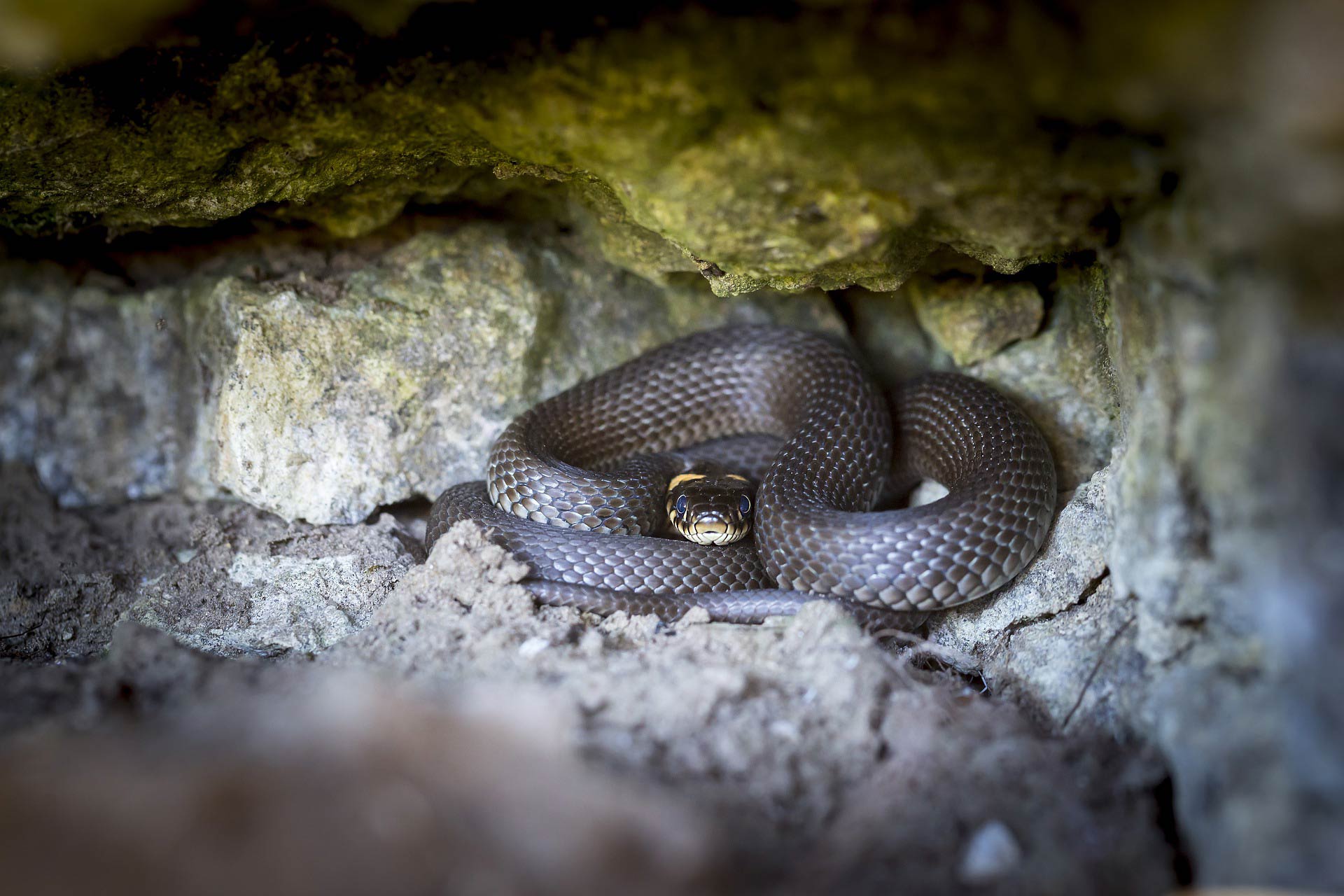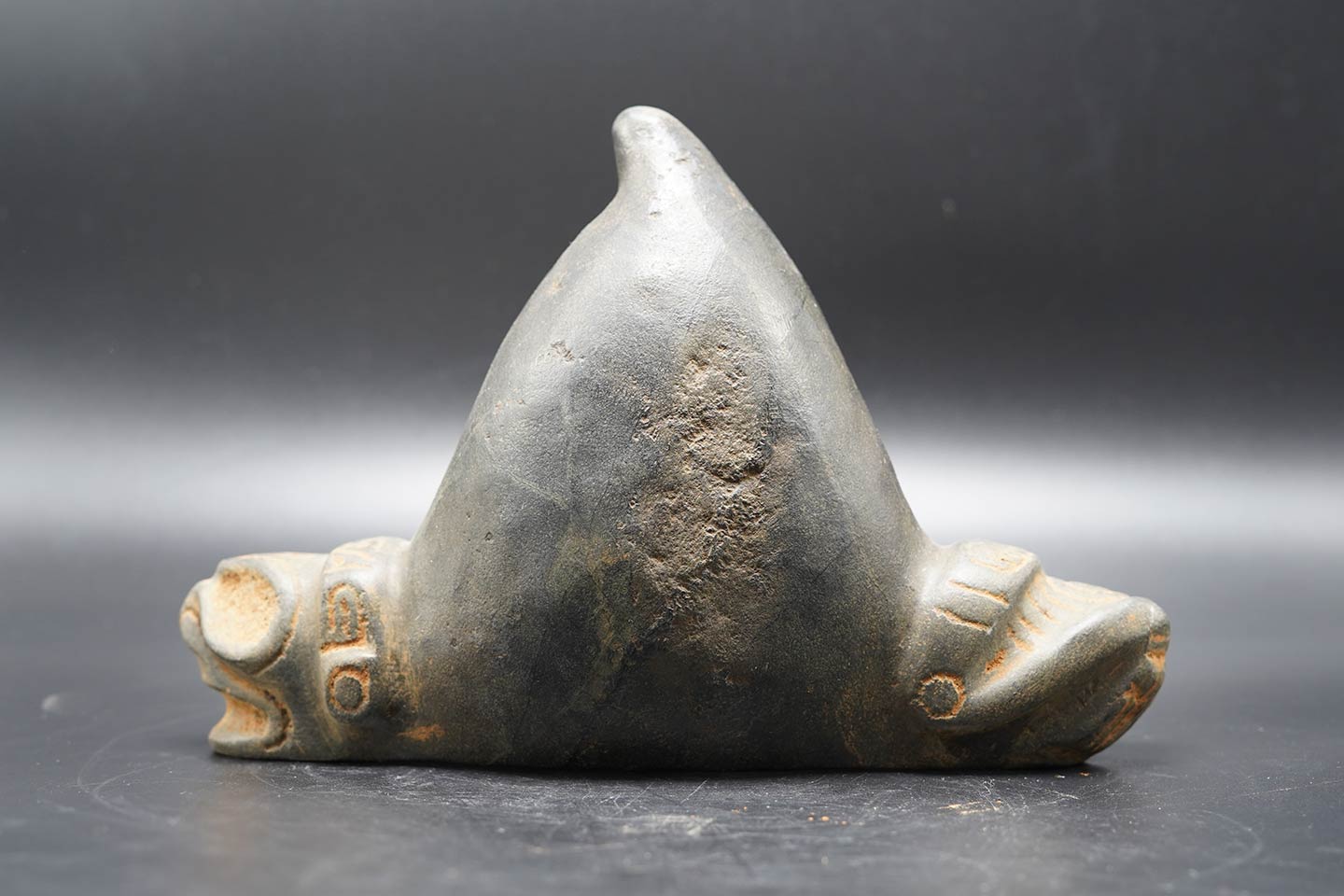Tripointers: Blessings from the great beyond

Without a doubt the most characteristic artifact of Taino culture is the tripointer, also known as “Trigonolito” or tri-pointed Cemi.
It is the most iconic Cemi (a Cemi being a figure or object that houses a deity as well as the deity itself), to the point that it is specifically associated with Taino culture.
Their origin is tied to proto-tripointers found in places inhabited by the first Arawak people that arrived to the Greater Antilles. Even though their origin comes from its Arawak roots, it’s without a doubt within the Taino culture that they acquire their peak artistic development showing the incredible stone skills of the Taino.
Blessings from the great beyond

Tripointers are believed to have been used during rituals to ensure a good harvest or to help couples conceive or to deliver women from the pain of labor. Others are believed to have been used to help with favorable weather conditions.
They were usually under the care of the Cacique (Chief). On this Cristopher Columbus wrote: “… Most caciques have three stones object of great devotion by them and their people. One, they say is good for the cereals and legumes they have sowed. Another one so that women can deliver their babies without pain. And the third for sun and rain when they are needed.”
The Behique and the snakes
Tripointers where generally made in very hard stone, usually in marble, serpentine or other hard rocks.
Different type of tripointers have been found through the years, focusing on certain human features (mostly faces, but also breasts & others) as well as animals, or otherworldly beings. Some cemis were adorned with precious metals and other decorations.
Certain cemis had the appearance of a reptile or bird. Some featured a humanoid face in one of the points while showing hind legs on another end thus a symbiosis between the human and the animal. Other cemis display what is believed to be a reptile head with very large jaws, while others resembled a snake.
Interestingly, snakes were a common subject in all kind of cemis, as it is believed deities often took the form of snakes in the physical world.
Death is believed to take us to an inferior part of existence, so it is not surprising that for the behiques (or village “doctor”) snakes, which hide in crevices and holes under our feet, can descend to the underworld and retrieve the souls of the sick from the claws of death.
Fray Ramon Pane, a Catalan missionary wrote in his book “Relación acerca de las antigüedades de los Indios” (An Account of the Antiquities of the Indians), the first book written in the Americas in a European language from 1498, how a Behique when not effective on his healing and the person under his care dies, the relatives of the deceased hit him with sticks to the brink of death. Then cemis arrive to help the healer in the form of snakes of different colors and species:
“One day the relatives of the deceased reunite and wait for the Behique to appear, they give him so many blows that they break his legs, arms and head, grinding him to a pulp and leaving him for dead. At night they say several kinds of snakes come, white, black, green and in many other colors, which lick the Behique’s face and whole body. The Behique stays this way two or three days and while like this, the bones in his legs and arms get back together and solder, he gets back up, walks a bit and goes back home. The ones that see him ask him “Weren’t you dead?” but he answers that the cemis came to his aid in the form of snakes.”

Even though cemis where generally in the care of the cacique, there were sometimes smaller tripointers kept by other members of the tribe. As the larger ones, these were used to ensure good crops and other favors.
The three stone angles
Their most obvious trait is obviously their triangular or tripointed shape, though they generally tend to have other interesting features not as popularly known.
The term “Trigonolito” was given by the Cuban archeologist Rene Herrera Fritot. Made by merging the roots “tri” (three), “gonus” (angles), & “lito” (stone). Roughly meaning “Three stone angles”.
They were generally made in smooth stone with the upper tip or the point that aims up slightly inclined forward, allowing for easy identification of the front of the piece.
In some tripointers the upper point was generally more inflated that the others, giving the whole piece the silhouette of a human female breast. Bringing into mind the ritualistic use given to these pieces for reproduction. And finally, the bottom of the piece was generally concave, so that the bottom points were the ones supporting the piece while the center was raised.

Adolfo de Hostos, one of the first writers on American archeology, believes that the upper point of the tripointer could evoke a shoot of yuca emerging from the ground, so it could have been used as a representation of the plant growth, symbolizing the life-giving force of nature. There is evidence of rituals where cemi are buried in the ground to help the crops.
Other theories, suggest that the shape of the tripointers is very similar to the mountains on the Caribbean islands, where sometimes a single mountain would span a whole island. This is particularly the case of the minor Antilles where the first tripointers were found.
Sources
Ramón Pané, Relación acerca de las antigüedades de los indios: El primer tratado escrito en América (nueva versión con notas, mapas y apéndices de José Juan Arrom), México, Siglo XXI Editores, 1974
Sven Lovén, Origins of the Taininan Culture, West Indies Göteborg, 1935
José Juan Arrom, Mitología y artes prehispánicas de las Antillas, Siglo XXI Editores 1989.
Fred Olsen, The Arawak Religion: The Cult of Yócahu, Mill Reef Digger’s Digest, Antigua West Indies, 1970.
Manuel A Garcia Revalo, Tainos arte y Sociedad. Dominican Republic, Amigos del Hogar, 2019.
Hernando Colón, Historia del Almirante (Luis Arranz, ed.) Madrid, Historia 16 1984
Jesse Walter Fewkes, The Aborigines of Porto Rico and Neighboring Islands, Twenty-fifth Annual Report of the Bureau of American Ethnology (Washington, D.C.) Smithsonian Institution 1907
José R. Oliver, Caciques and cemí idols. The Web Spun by Taino rulers between Hispaniola and Puerto Rico, Alabama, The University of Alabama Press, 2009
José Juan Arrom, Mundo mítico de los taínos: Notas sobre el ser supremo. 1967
Adolfo de Hostos, Three-pointed Stone Zemi or Idols from the West Indies, An Interpretation, American Anthropology 1923